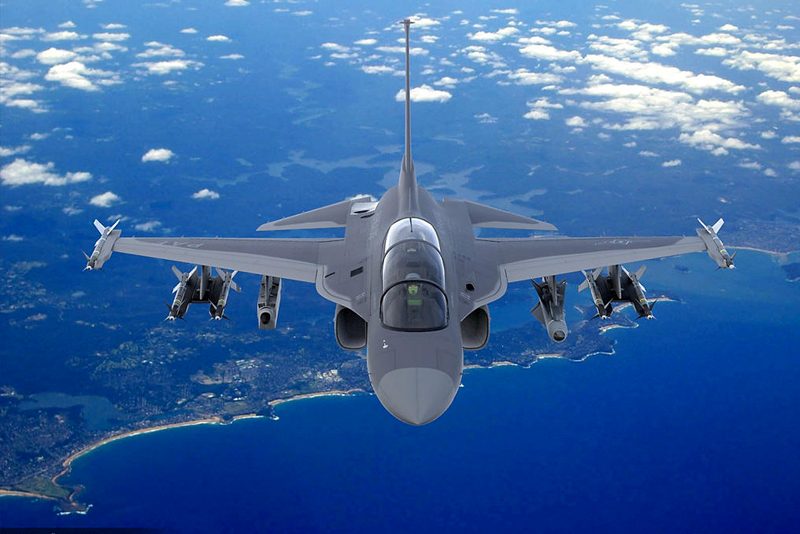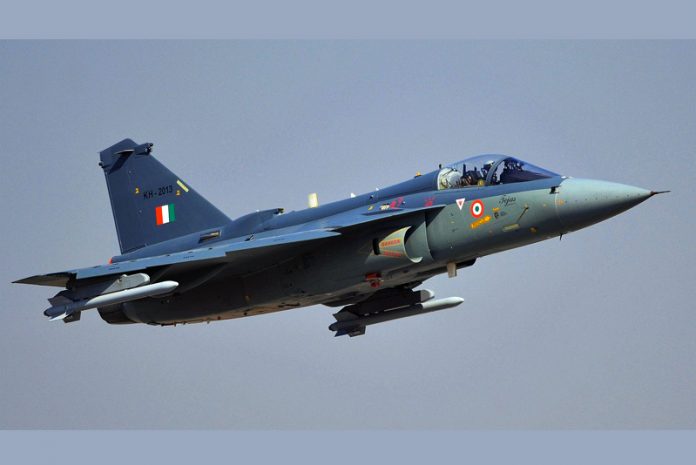Ben Ho – The Royal Malaysian Air Force (RMAF) is said to be on the market for a Light Combat Aircraft (LCA) to augment its existing ‘heavy’ fighter fleet of Boeing F/A-18 Hornets and Sukhoi SU-30 Flankers.
The LCA, slated for delivery in 2021-2022, is part of the RMAF’s ‘Capability 55’ transformation roadmap aimed at sustaining the service’s capabilities up to 2055. Three platforms are reportedly contenders for the LCA programme: HAL Tejas (India), CAC/PAC JF-17 Thunder (China-Pakistan), and KAI FA-50 Golden Eagle (South Korea).
But which one of them would be the best choice for Malaysia?
In terms of performance, the Golden Eagle and Tejas have arguably superior avionics compared to the Thunder. In other areas such as speed, service ceiling and payload, however, all three platforms are fairly similar. Any advantage one aircraft has over one or the other two contenders is marginal or can be negated in other areas.
When operational attributes are more or less the same, commodisation kicks in. This is an economic situation, where, in the words of leading defence industry expert Richard Bitzinger, there “exists an almost total lack of meaningful differentiation between competing products, and when they are instead sold almost entirely on the basis of price”.
Indeed, Malaysia’s well-documented economic woes mean that cost could be the main concern for Putrajaya when it comes to the LCA programme. Based on cost alone, the JF-17, with a unit price of some $25 million, is the cheapest amongst the three contenders. However, both the Tejas and FA-50 are priced at around $28 million and $30 million respectively. Given that Malaysia is reportedly looking into acquiring up to 36 LCAs, a very substantial amount will be saved should the cheapest option – the JF-17 – be chosen.

Cost is just one of several drivers behind any one arms acquisition decision. That the JF-17 uses a Russian engine fairly similar to the one used by the now-grounded MIG-29 in RMAF service could also be a factor in Malaysia’s choice of aircraft. The Klimov RD-33 engine had serviceability issues when the MIG-29 was deployed. The JF-17 may therefore not be the best option in terms of reliability, and it may need significant after-sales support and maintenance.
As for the Tejas, it has some commonality with the RMAF’s logistical base as it is powered by the General Dynamics F404 engine that is also used by the service’s F/A-18 Hornets. There is also an element of congruence with the service’s mainstay, the SU-30, given that the Tejas can accept Russian weapons.
However, some parts of the Tejas’ avionics suite are Israeli in origin, and this could influence Malaysia’s final decision given its stance towards the Jewish nation. Indeed, should the Indian aircraft be chosen, it is not inconceivable that all the ‘Made-In-Israel’ parts would need to be replaced with something more politically palatable. This invariably means additional costs.
This brings us to the third and last option for the LCA, the FA-50. While the Korean aircraft is the costliest prima facie, it has a number of advantages.It also has the reliable F404 engine, and accepts Western armaments. Logistical commonality with the RMAF Hornet fleet – checked. Likelihood of lower downstream costs – also checked.
Moreover, the Golden Eagle is a fairly well-established platform in the region as it is already in service with Indonesia, Thailand, and the Philippines. Should the RMAF get this aircraft, interoperability between its major regional counterparts during exercises and operations would be enhanced. All in all, while it may be the most expensive, the Golden Eagle offers benefits, both tangible and intangible, that arguably transcends its $30 million price tag.

While pragmatic reasons as discussed above posit the South Korean aircraft as the choice to make, political considerations, like the need to strengthen ties with either India or the Iron Brothers (Pakistan-China), may become overriding. This state of affairs is commonplace all over the world, but especially so in South-east Asia, and we may just see it happen again in Malaysia’s LCA requirement.
by Ben Ho













